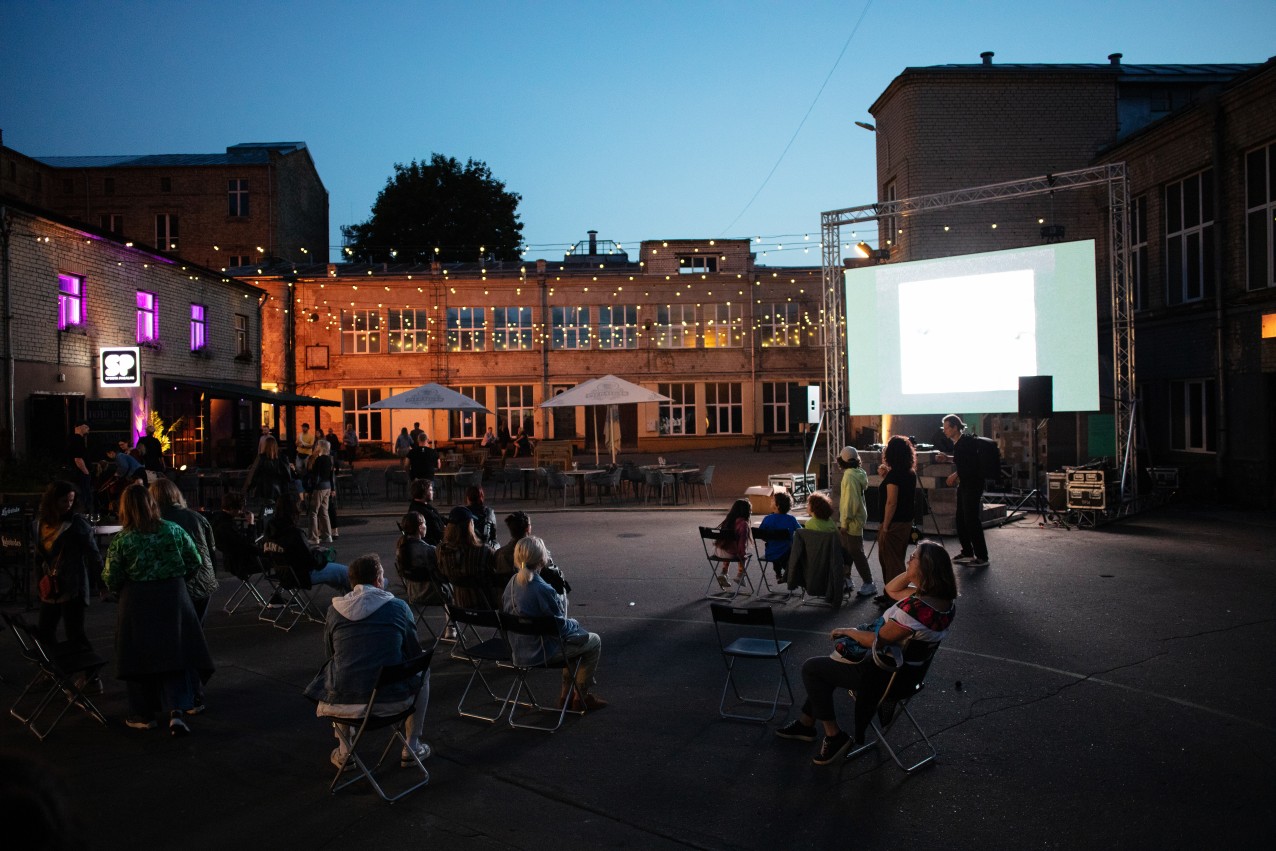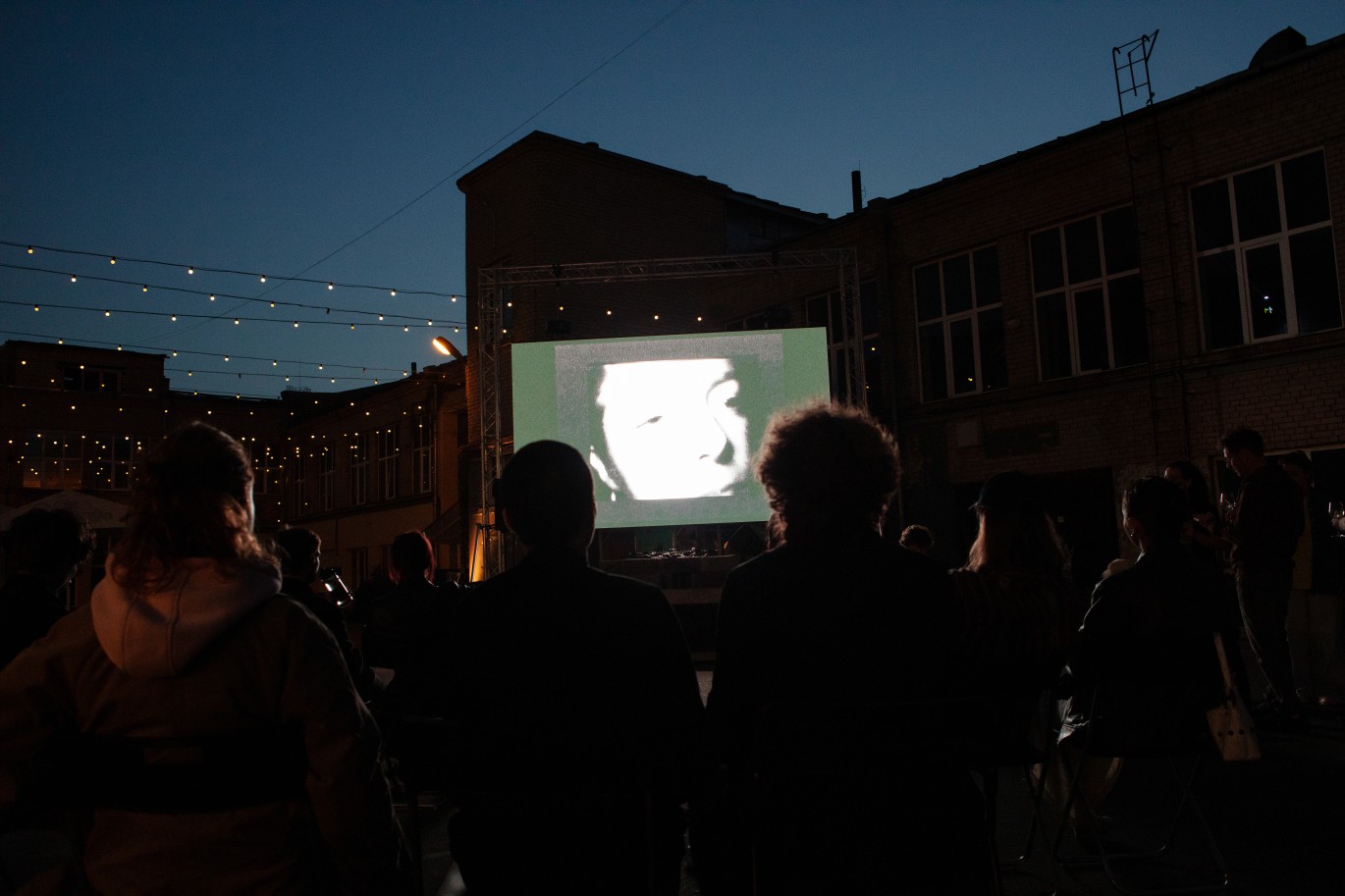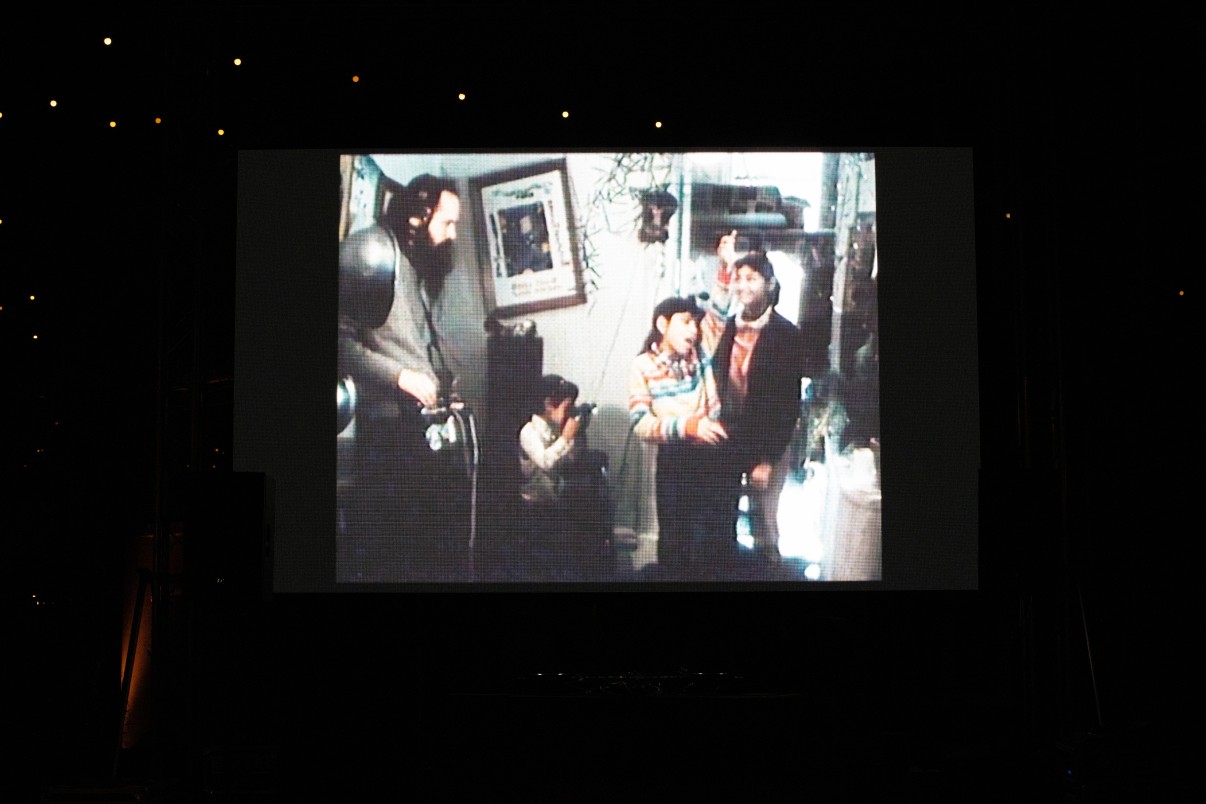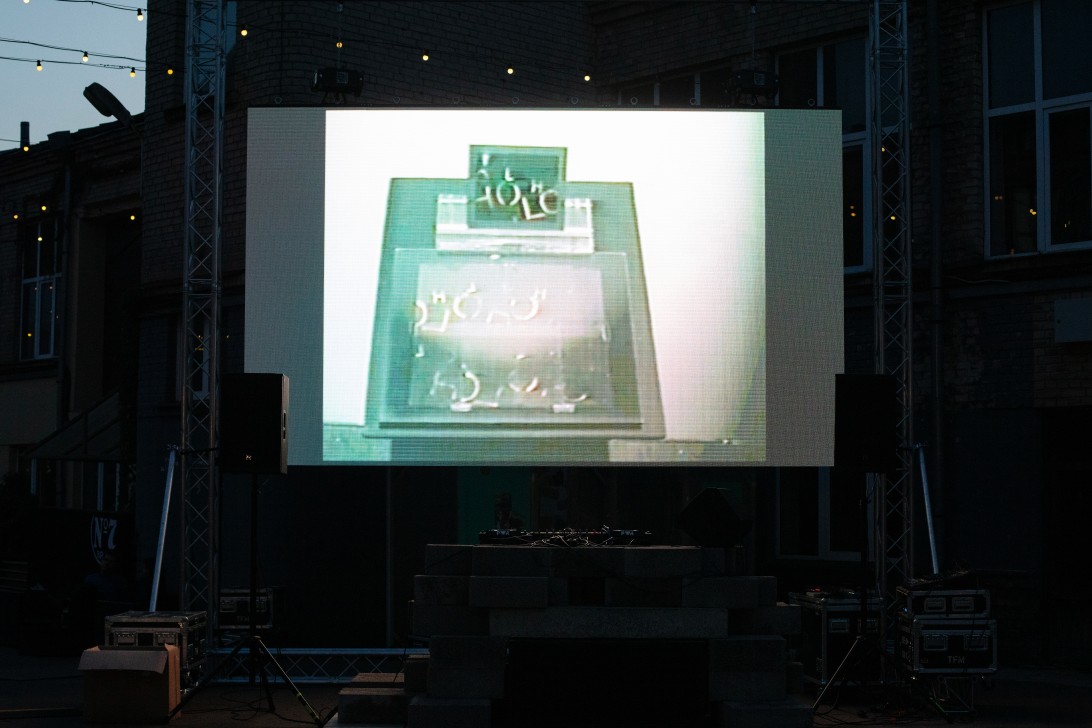Annual Cultural Forum 'White Night' at Kim? Contemporary Art Centre
September 9, 2023
Exhibition, video screening, and laser projection commission co-curated with RTRU (Riga Technoculture Research Unit) and Kim? Contemporary Art Center.
Press:
——————————————————————
Program:
12.00–02.00 Indriķis Ģelzis solo exhibition Watery Day’s Eye and outdoor sculpture
19.00–22.00 Video art screening program curated by RTRU
20.00–06.00 Matt Copson laser projection
22.00–02.30 Live electronic music sets by Muuzis, Pitch Black, SMILTIS, VJ @habibah_akilah_jamila
Triangle in Front of Square in Front of Circle in Front of Triangle
Video art screening program (curated by RTRU)
Kim? courtyard, Sporta 2
September 9 7–10 pm
Participating artists:
Max Almy, Nancy Angelo, Animal Charm, Liza Bear, Sadie Benning, Peer Bode, Bureau of Inverse Technology, Shu Lea Cheang, Abigail Child, Colectivo Los Ingrávidos, Norman Cowie, Jesse Drew, Hermine Freed, Sabine Gruffat, Joon Soo Hoo, Eduardo Kay, Les LeVeque, Diane Nerwen, Dan Sandin, Nina Sobell, Caspar Stracke, Vasulkas Inc, Scott Wolniak, Zhengan Yang.
Triangle in Front of Square in Front of Circle in Front of Triangle, curated by Riga Technoculture Research Unit (RTRU) and organised by Kim? Contemporary Art Centre brings together a diverse group of 24 intergenerational and transcultural artists in a three-hour-long broadcast of seminal video artworks, ranging from experiments in structuralist film, lo-fi optical illusions, and narrative documentaries. The presentation borrows its title from Dan Sandin’s early research work Triangle in Front of Square in Front of Circle in Front of Triangle (1973), a project examining computer-generated imagery initially commissioned by the University of Chicago. In the work, Sandin explains the common mistake of using language concepts and spatial relations to describe what actually happens, on a technical level, on the video screen. Each work plays the confusing role of technology within contemporary culture in its respective decade, from the 1970s to the present. The selection represents video works broadly concerned with developing new images, each a landmark study in media art history.
Works by Max Almy, Liza Bear, Joon Son Ha, Dan Sandin, Caspar Stracke, Vasulkas Inc., and Scott Wolniak, among others, transport viewers into a world that is an abstract study in machine-generated imagery. Decidedly low-tech, many artworks construct optical abstractions through analogue processes, such as rescanning, resampling, looping, photocopying, and oscillators. Through processes of degeneration of sound and image, works endow their culturally specific content with new context and implication – for example, the American flag reenvisioned as in Joo Soo Ha’s Just (2002), or the intersection of urbanity and the mechanised image, as in Vasulkas Inc’s Urban Episodes (1980).
Single frames of electronic landscapes are exported and evolved through repetition before being metamorphosed back to digital image by scanning and rendering. Still works by Sadie Benning, Shu Lea Cheang, Sabine Gruffat, and Nina Sobell explore the feminist discourse of their day, capturing the status quo of women’s alienation and queer identity embedded within images of advertising and media. These artworks attempt to make contact with their protagonists’ self-image directly – to, in effect, claim their image. The everyday performance of women’s labour and identity is teleported into surreally electronic, which plays off social consciousness and the frustrations of feeling trapped by social prejudices.
By exploring multigenerational images in a contemporary context, Triangle in Front of Square in Front of Circle in Front of Triangle provides a poetic allegory about technology’s invasion of the body — an act of self-encapsulation that takes the body and psyche as its surround.
About RTRU
The Riga Technoculture Research Unit (RTRU) is a new digital platform curated by Elizaveta Shneyderman (New York) and Zane Onckule (Riga) under the commission of Kim? Part research journal, part art and writing publisher, and part hub for developments in emerging media, RTRU brings an interdisciplinary and technicity-centered approach to the status quo of contemporary art programming.
——————————————————————
Matt Copson’s laser animation Obituary (spit)
Kim? courtyard, Sporta 2
September 7–9, during night hours
In Obituary (spit), a laser projector depicts a fox’s head eternally rotating on a spit over a fire. The fox character is a recurring feature in Copson’s work, an adaptation of Reynard the Fox, a character from Lorraine folk tradition – one of the first instances of anthropomorphism. The loop of the animation and the character’s fate seem intertwined, occasionally evolving into various states of abstraction as if the character is melting alive or transcending its fate before constantly returning to its original condition.
Matt Copson (1992) lives and works in London. He graduated in 2014 from London’s Slade School of Fine Art. His work uses theatrical devices and artistic tropes to create existential dramas of contemporaneity, abstraction, eternal recurrence and the uncanny. Arist presented his work in solo and group exhibitions at Fondation Louis Vuitton, Paris; Mönchehaus Museum, Glosar; Serpentine Gallery, London; Irish Museum of Modern Art, Dublin; Sharjah Art Foundation, UAE, amongst others. In 2017, he participated in the 89plus residency at the Paris Google Cultural Institute.
——————————————————————
Indriķis Ģelzis solo show Watery Day’s Eye
Kim? Contemporary Art Centre
September 9, 12 pm–2 am
During the White Night, Kim? The Contemporary Art Centre is hosting Indriķis Ģelzis’ most spacious exhibition. In it, the artist focuses on expansion and contraction processes, taking the Baltic Sea as a reference and discussing the ‘liqui-modern’ individual drowning in turbulent changes. The colours of the folklorised elements of nature tint the gallery’s usually white walls. Flashes of experience and memory act as binders for sculptural appropriations of welded, bent, oiled artworks, which absorb and entrap the shapes and forms of living organisms and bodily details. The functionally utilitarian pieces – tiles, carpets – of the communal spaces establish the rhythm grid to which the emotional passage of the entire Watery Day’s Eye plays out, created with the help of light and sound.
Indriķis Ģelzis (1988) is one of his generation’s most prominent and recognisable Latvian authors, working locally and internationally. His creative practice, developed over a decade, combines intense manual and research work in the studio, starting with abstract data collection and work with digital tools, moving on to welding, folding, cutting, and sewing. Individual memories and regional political turmoil are embodied in planes and free-standing objects-figures that range from small-scale wall sculptures to large-scale objects in public spaces.
As part of the exhibition, a freestanding sculpture by Indriķis Ģelzis, The Name for Green is Camouflage, will be on view at Sporta 2 Quarter.
——————————————————————
Kim? White Night program
Curators: Zane Onckule, Elizaveta Shneyderman
Scenography: Rūdolfs Štamers
Projekt manager: Evita Goze
Projekta manager assistant: Katrīna Jauģiete
Communication: Austra Stupele
Supported by: Ministry of Culture, State Culture Capital Foundation, Riga City Council.









